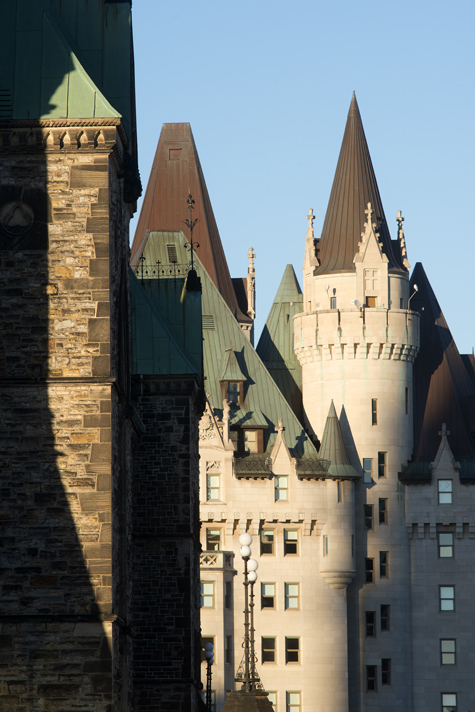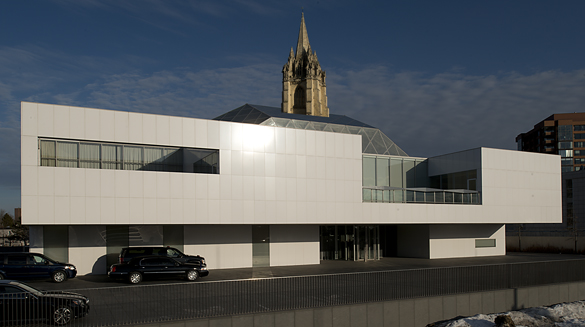As promised, the revised design for the Château Laurier expansion was unveiled last week. It didn’t create anything like the media (and social media) storm that the first version did, partly because the message was much more closely controlled by the architects this time, and partly because it was so similar to Version 1 that there wasn’t much new to say.
But it was nevertheless instructive, because it proved beyond doubt that the current owners and their architect cannot produce an acceptable addition to the Château Laurier. Their proposed design, largely unchanged from one version to the next, is fundamentally and fatally flawed. Here’s why:
In order to work, a new addition to an old building has to understand and engage with the architectural language of its predecessor. That, I argued in an earlier blog, is what made Arthur Erickson’s addition to the Bank of Canada successful – it didn’t imitate the forms of Classicism, but it understood and embraced Classical values. That’s the kind of sensitivity we need at the Château Laurier, but it’s not what we’re getting.
The Château, of course, doesn’t speak the language of Classicism. It speaks the language of romanticism. If that sounds trite and sentimental, I’ll point out that this language grows from aesthetic theories of the picturesque and the sublime, which are very sophisticated intellectual constructs that were highly influential in the 18th, 19th and into the 20th centuries. The Château also draws heavily on 19th-century theories of ‘association’, or architectural allusion. The result is architecture of carefully crafted irregularity, emotional ambition and historical echoes.
In order to produce a design that isn’t grotesque, Peter Clewes, a committed Modernist, needs to understand and embrace the values of romanticism as fluently as Erickson did Classicism. It’s clear that he is either unwilling or unable to do so. I’m not even sure that it’s possible for Modernism to have a meaningful visual conversation with romance. Romance looks like this:
Modernism looks like this:
I actually like them both, but they go together like brown shoes and a tuxedo.
It’s true that a nominal effort to harmonize has been made. The horizontal levels of the new wing match the old, and both are clad in Indiana limestone. But these are superficial connections that are overwhelmed by the fundamental differences in sensibility. Does anyone really believe that Barack Obama and Donald Trump would get along just fine, if only they were the same height and both wore beige suits?
If it turns out that these two styles simply can’t have a meaningful visual conversation, then the solution is simple: don’t add a Modern wing to the Château Laurier. If no available architect can design something more sympathetic, then don’t build the addition at all. Lacking the tools needed to do a good job does not make it okay to do a bad job – not with such an important building, on such an important site.
One last point: Peter Clewes said in the Citizen last week that people who criticize his design “hate modernism, that’s just the way they feel”. This is utter nonsense – it’s probably closer to the truth to say that the problem is that architects hate historical styles, that’s just the way they feel. But the real problem isn’t the style, it’s the way it violates and obscures the original building. Everyone who knows me knows that I love Gothic, but I would be just as outraged if someone proposed a Gothic addition to, say, the Delegation of the Ismali Imamat. I would be the first to circulate a petition demanding that it be stopped. And Peter Clewes just might sign it, blissfully unaware of the irony.
Peter Coffman
peter.coffman@carleton.ca



